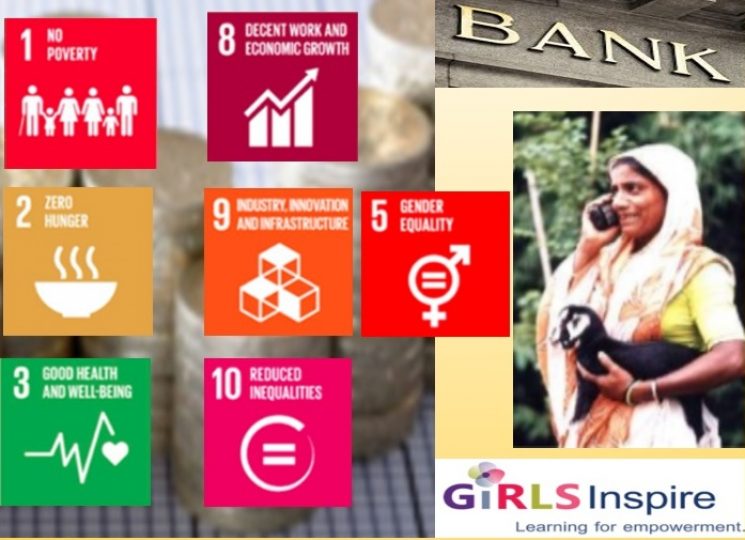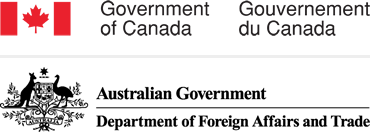Every human being on this planet has some sort of genius or potential. Sometimes these potentials cannot be explored due to lot of social, economic and cultural constraints. Unfortunately, girls and women are most vulnerable group to those constraints. Mostly in the developing countries, girls and women are not usually allowed to have endowment over the family resources. On the other side, the financial institutions do not allow anyone to access the financial supports if she/he doesn’t have resource endowment which can be used as collateral. As a result, a major portion of girls and women struggles to improve their livelihood even if they have huge potentials and innovative skills. According to Global Findex Data (World Bank, 2011), 47 per cent of women and 55 per cent of men worldwide have an account at a formal financial institution, whether a bank, credit union, co-operative, post office or microfinance institution. Among Commonwealth countries, the gender gap (with women being less likely to have accounts than men) was the highest for India, Pakistan, Trinidad and Tobago, Mauritius, and Uganda (World Bank Global Findex 2011).
Although gender equality and access to economic resources are the basic human rights for women, gender gap in accessing financial resources not only perpetuates poverty, but also widens the inequality between men and women (Stavern, 2001). Access to financial resources is critical for women as it enhances their innovative powers, social rights and economic stability. ‘Broadening access to financial services will mobilise greater household savings, marshal capital for investment, expand the class of entrepreneurs, and enable more people to invest in themselves and their families. Financial inclusion is therefore necessary to ensure that economic growth performance is inclusive and sustained’ (AfDB 2013, p.25).
Sometimes it is thought that widening financial inclusion may be enough to reduce the gender gaps. In practice the scenario is different. ‘In Bangladesh, financial inclusion increased by 6% between 2014 and 2015, driven by the growth of mobile money. However, the gender gap has increased from 3% points to 10% points over the same time period’ (UNCDF, 2017). Therefore, it is important to introduce some special arrangements for women’s financial inclusion. As an example, collateral free microcredit schemes in Bangladesh made almost 10 million ultra-poor women self-reliant.
Financial inclusion is the key for the girls and women to have a sustained livelihood and gender equality. It directly or indirectly speaks to at least seven of the global goals such as SDG1, SDG2, SDG3, SDG5, SDG8, SDG9 and SDG10. Could you share the status of financial inclusion of the girls and women attached to your organization? What kind of financial inclusion they are experiencing – access to financial institutions or access to financial services or both? I am looking forward to your contribution in this regard.
References:
Findex, G. (2011). Financial Inclusion Data. The world bank.
van Stavern, I. (2001). As cited in Commonwealth Secretariat in the discussion paper on “Strategies for Woemn’s Financial Inclusion in the Commonwealth, 2015”.
AfDB. (2001). As cited in Commonwealth Secretariat in the discussion paper on “Strategies for Women’s Financial Inclusion in the Commonwealth, 2015”.
UNCDF. (2013). “Remittances as a river of women’s financial inclusion, 2017”. Retrieved 30 August 2017 from https://www.uncdf.org/…/file/…/uncdf—asean-remittance-paper-22-6-2017final2pdf
Menu




6 thoughts on “Financial Inclusion for Women – How it makes our works sustainable?”
Girls and young women are of very special focus in the new strategic plan of sparc. Now there is no two opinion about female participation in financial and regularized economic activity that it is a key to sustainable development. At SPARC, we provide vocational and skill training along with basic financial and life skills so that their financial inclusion is facilitated and sustained. We have also arrangements of connecting them to small loan schemes for their entrepreneurial startups. The results are already phenomenal as the livelihood of the whole community sees drastic change. One of the studies shows well-being of children of mothers who had a chance of financial inclusion had better well being status.
Dear Sadia,
Wow .. you specified the cases how financial inclusion for women add value to themselves as well as their families. Amazing experience – certainly a great lesson for all of us! The holistic model you implenting for change making in girls’ life and livelihood is just extraordinary in terms of sustainability. Hope we will hear more from you in the webinar following the Mann Deshi’s experience sharing.
Thanks again for your nice feedback on the blog.
our society is greatly influenced to participate women in financial activities and social norms can have a profound impact on financial inclusion for women because it limit their working place.sometimes women feel insecured to engage in an investment to run a business.when woman have a voice in financial decisions,it can benefit the society and also her own life.
Thanks Israt for your thoughtful comments. Yes, only access to financial resources is not enough, the women must have the control on the finalcial resources. We will talk more on the Financial Inclusion models for poor women. It is nice to read your analytical comments. Please stay tuned with GIRLS Inspire posts and share your views always.
Cheers,
Mostafa
Wow! It is really inspiring to hear the feedback on financial inclusion for women from all of you. It is great to see how access to financial service for women can improve family life, by allowing women to control and plan finances in the household as well as encourage women to be entrepreneurs. It is such a meaningful step in providing better well-being from women and communities. Thanks for your insights everyone!
I am still at a loss of words from this amazing financial inclusion for women model! It demonstrates irrefutable evidence that with access to financial services (bank accounts, loans, etc.)women’s bargaining power in society increases. Conventional approaches to reach the unreachable / unbankable women are not enough. As ADPP we are bringing the women / Girls slowly access finances and save through the savings and loan groups and also using m-pesa (the mobile financial services). M-pesa allows these women to send, receive, deposit Money, buy airtime, thus having a level of financial control in their hands. So much more still needs to be done as financial services (banques and loans) to help them start own businesses are very limited. Once they are trained and gain more confidence, we would like to grow the concept of group economies also called xitique in local language to help them save towards businesses. Early days but this webinar really inspired me. Thank you for sharing all this information Mustapha.
Comments are closed.